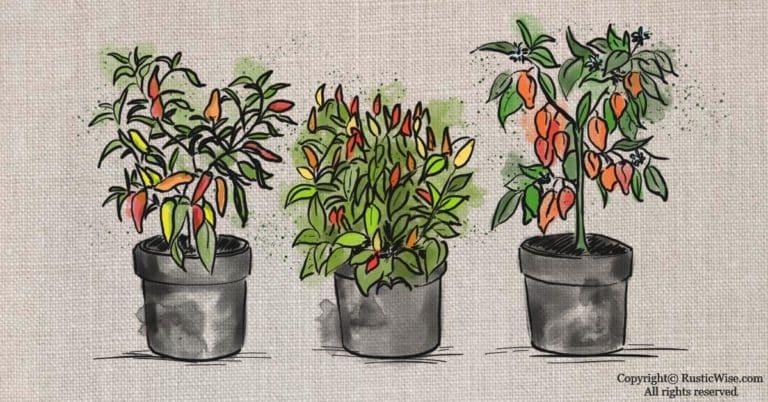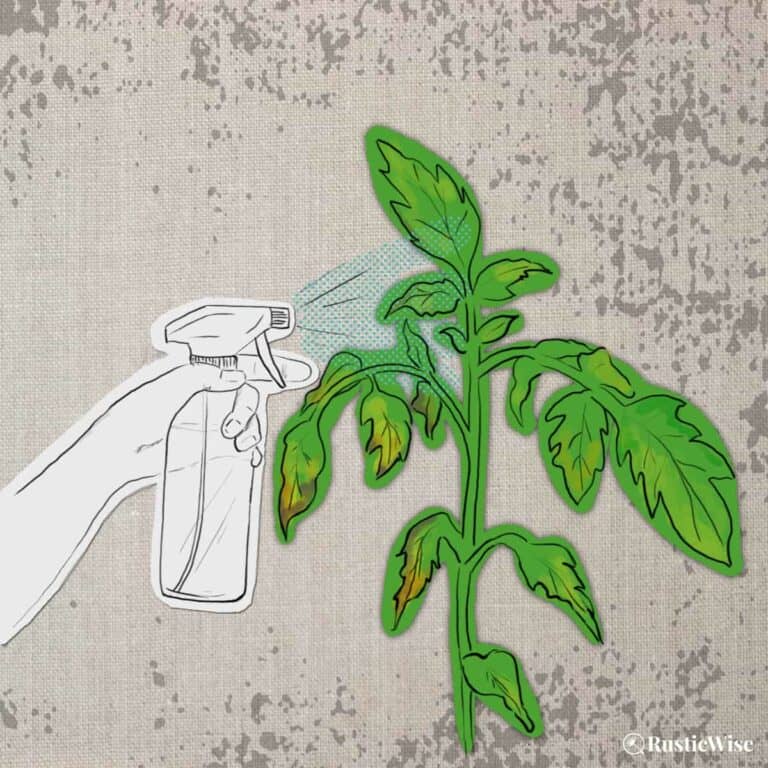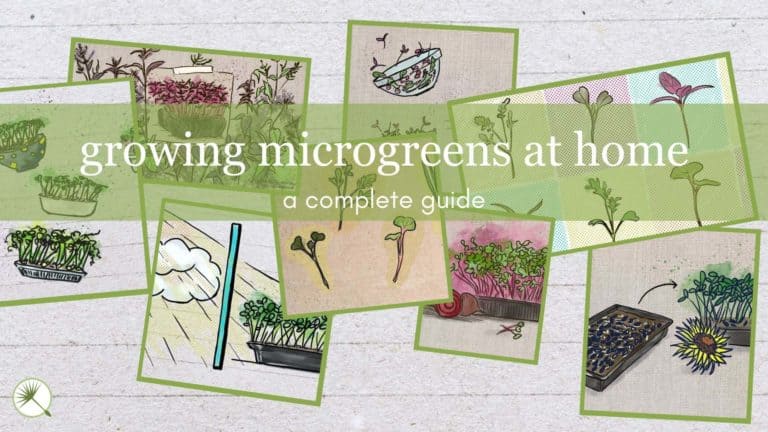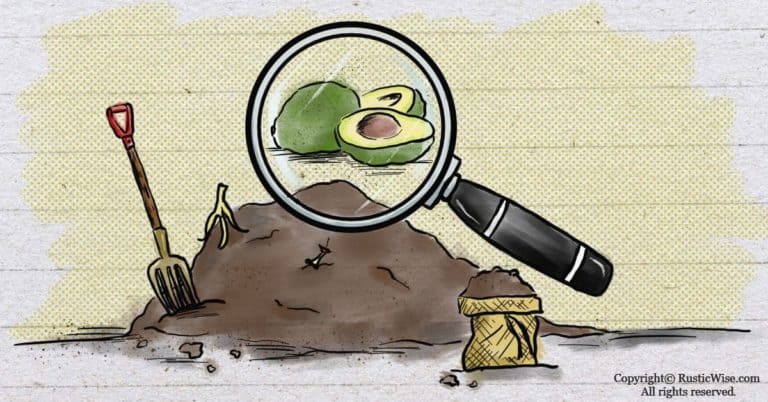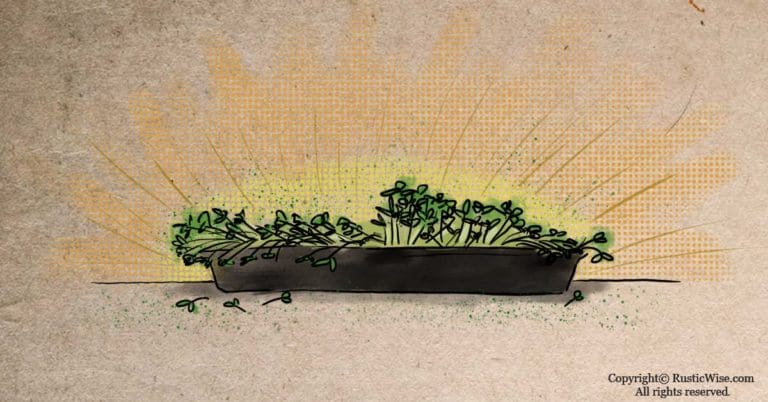What Does Mold on Sprouts Look Like?
If you’re growing sprouts and notice something white and fuzzy appearing on your sprouting seeds, don’t panic. You’re probably wondering, what does mold on sprouts look like? While that white stuff could be mold, there’s also a good chance that it’s just cilia, or hair roots, a normal part of healthy sprouts. We’ll take a look at key differences between mold and cilia.
It’s important to properly identify whether your sprouts actually have mold, or if it’s just healthy roots. You don’t want to end up throwing out a batch of perfectly good sprouts! Let’s take a closer look at mold vs. feathery roots.
What does mold on sprouts look like?
One of the first signs of mold is the strong, musty smell.
Your sprouts may look slimy.
Mold on sprouts is often white with a cobweb-like appearance. Mold appears typically on many areas of the sprouts, particularly the base of sprouts (not the roots), or sometimes on stems or leaves. Sometimes you may see small black specks of mold.
If you believe it’s mold growing on your sprouts it’s best to discard them. Ensure you thoroughly clean your sprouting equipment. Mold spores tend to spread quickly, especially between fruits and vegetables. It’s a good idea to also wash any areas around your sprouts as well as any nearby food.
Here’s a picture of mold growing on wheat sprouts.
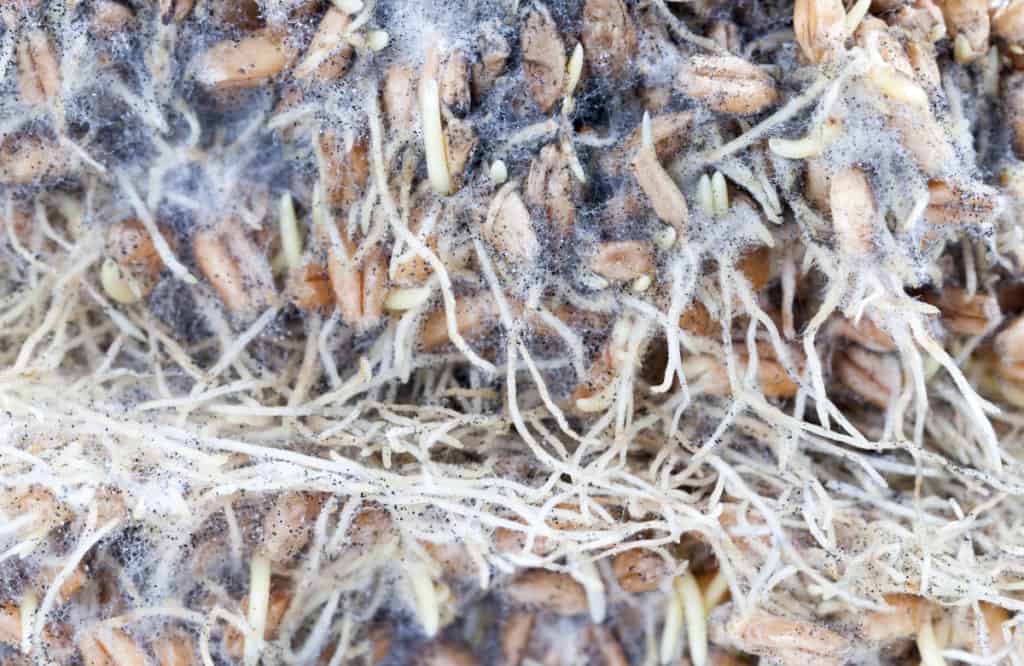
Credit: Deposit Photos
There are many reasons why your sprouts have mold. A few common reasons for mold include:
- Improper drainage: Sprouts sitting in water are prone to mold growth. Make sure you allow all water to fully drain after each rinse. If you’re using a jar sprouter, tip your jar at an angle and place inside a bowl to allow all water to drain.
- Too hot or humid: Heat and humidity are two factors which you want to control in order to grow healthy sprouts. If your room temperature is too warm, you may need to consider moving your sprouts to a cooler location. Try to keep sprouts at 70-80 degrees Fahrenheit (21-27 degrees Celsius), or roughly room temperature during the sprouting process.
- Inadequate airflow: Fresh air is vital for healthy sprout growth. If you’re growing your sprouts in an enclosed space such as a cupboard, remove and place in an area with healthy air circulation.
Did you know…According to the U.S. Department of Agriculture (USDA), an ideal humidity level to prevent mold growth is below 40 percent.
A closer look at root hairs (cilia) on sprouts
If you’re working with a batch of good seeds, followed the soaking instructions for your particular type of seeds, and ensured your sprouting equipment is squeaky-clean, chances are that white stuff isn’t mold at all.
It’s probably root hairs called cilium, or cilia (plural).
Cilium appears typically after the second or third day. They are tiny, white, hair-like growths appearing on the roots of sprouts. Some describe these hairs as feathery. This is a normal growth stage of many types of sprouting seeds.
The cilia appear when the plant is searching for water and/or nutrients. It’s important at this stage to keep up your twice daily (or more!) rinsing routine using cool, clean water.
You may notice that these feathery roots are more pronounced right before your routine rinsing time.
After rinsing, your fuzzy sprouts look, well, less fuzzy. The hair roots are less pronounced right after they’ve absorbed water. You may notice they reappear right before its next rinsing.
Tip: Remember to keep up your regular rinsing routine when cilia appear. Your sprouts are looking for water!
Here are some cilia on a batch of mixed sprouts we grew at home. Sorry if these pictures aren’t the best examples of root hairs—I’ll try to get better pictures soon.

Credit RusticWise.com
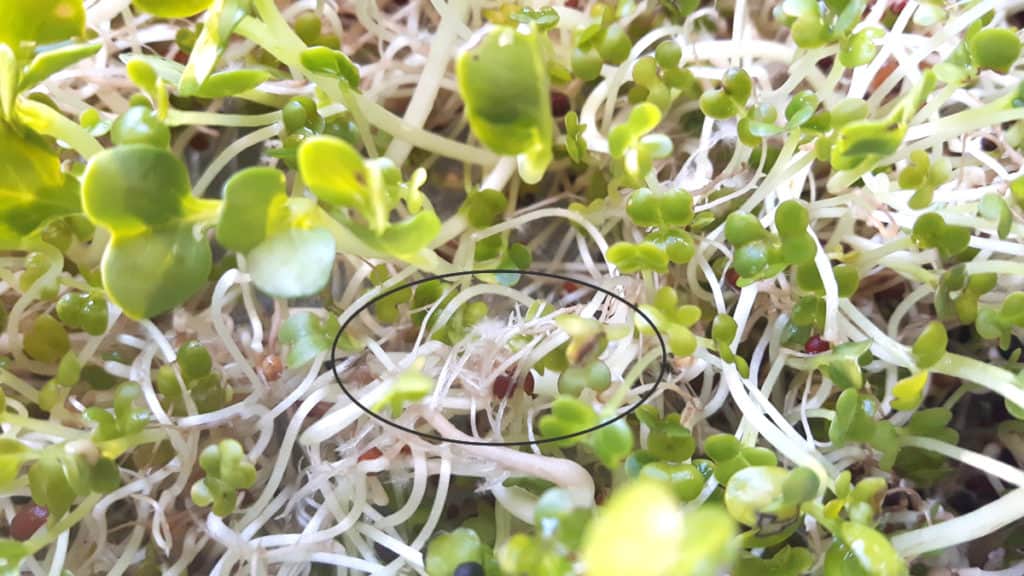
Credit: RusticWise.com
Key differences between mold and root hairs
Here’s a table summarizing the differences between mold growth and normal growth of cilia.
| Mold | Root Hairs (Cilia) | |
|---|---|---|
| Appearance | Whitish and stringy (like a spiderweb). | Whitish and feathery with a conical shape. |
| Location | Appears on many areas, mostly along the base of sprout seeds, and occasionally on the stems and leaves. | Appears only on the roots. |
| Smell | Often smells musty. | No smell. Sprouts should “smell” fresh. |
| Washes away after rinsing | No, the mold doesn’t go away. | Yes, root hairs are less noticeable after rinsing. |
Types of sprouts with root hair
Certain types of sprouts are more prone to developing root hair. Common types of sprouts that develop cilia include:
- Broccoli
- Cabbage
- Grains (including barley, wheat, and millet)
- Mustard
- Sunflower
- Radish
Can you eat moldy sprouts?
No, please don’t eat moldy sprouts. It’s not worth the chance of getting sick. Besides looking slimy, they’ll smell bad, and taste even worse.
Mold on vegetables such as sprouts, is not the same as mold on hard cheese. While you can easily cut off the moldy portion of cheese, you can’t do the same for sprouts.
Once mold appears on the surface of foods, especially soft foods, it’s an indication that roots have formed below the surface. These roots can’t be easily cut off or rinsed away.
According to the USDA, some common foodborne molds include:
- Alternaria
- Aspergillus
- Botrytis
- Cladosporium
- Fusarium
- Geotrichum
- Monilia
- Manoscus
- Mortierella
- Mucor
- Neurospora
- Oidium
- Oosproa
- Penicillium
- Rhizopus
- Thamnidium
Can you salvage moldy sprouts? While it’s tempting to try to save any possible “good seeds” and throw out the moldy ones, it’s probably best to discard the batch and start over again.
Give your sprouting equipment a good cleaning before trying again.
How to get rid of mold on sprouts
We have written a post, 10 Reasons Why Your Sprouts Smell Bad, which troubleshoots the most common reasons for mold growth when growing sprouts:
- Poor quality seeds
- Improper seed storage
- Poor rinsing
- Improper initial soaking
- Improper or irregular rinsing
- Insufficient drainage
- Poor air circulation
- Cleanliness (or lack thereof)
- Warmer growing conditions
- Fruit flies
There are many factors that affect mold growth. However, in our opinion, the most common reasons you may have a mold issue in sprouts is due to insufficient draining, poor air circulation, or a growing environment that’s too hot or humid.
So drain those sprouts well. Let fresh air get to those sprouts (that means taking it out of a dark cupboard if that’s where you’re keeping them). Keep humidity levels below 40 percent.

Author: Josh Tesolin
Josh is co-founder of RusticWise. When he’s not tinkering in the garden, or fixing something around the house, you can find him working on a vast array of random side projects.



